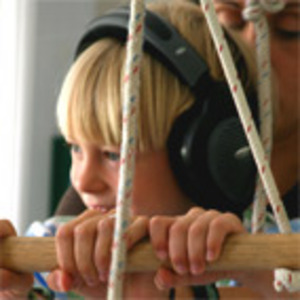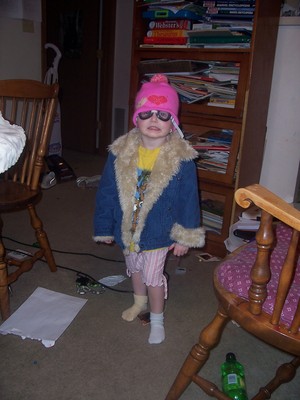Parents of autistic children are perpetually inundated with new therapy options. Every week it seems a new book, supplement, exercise, software program, or philosophy of therapy has come on the market and is being discussed on talk shows and message boards. One week it might be dietary interventions and the next week the rage might be brushing therapy.
That being said, Therapeutic Listening® might understandably raise some eyebrows upon first description. A sound-based therapy, created by occupational therapy pioneer Sheila Frick (OTR), TL utilizes specially filtered music, played through special headphones designed to help autistic kids better integrate their sensory systems.
Sensory processing disorders are common among autistic kids. Essentially, underdeveloped nervous systems have trouble understanding the information received from their senses. The result can be over-stimulation of certain senses or lack of feedback from others. A child might be terrified of the sound of a vacuum cleaner or unable to stand the flickering of fluorescent lights.
Therapeutic Listening® doesn’t claim to fix all this. However, it is supposed to generally improve the ability of these kids to sustain attention, organize and regulate their behavior and communicate. Some anecdotal reports suggest the music therapy can help calm aggressive behavior and even aid potty training.
Parents will have to invest in certain key components: First of all, only a certified occupational therapist (OT) trained in Therapeutic Listening® can administer the therapy. The special headphones, which allow certain sounds to be played through each ear at certain times, must be purchased from Vital Sounds for about $145. A CD player with a random play button and the ability to turn off the bass is another requirement.
The special CDs — there are about a dozen different of them in the series — cost around $40 if purchased. However, some OTs will rent or loan them to clients. The child spends two weeks with each CD before moving on to the next.
The content ranges from whale song to “Wheels on the Bus” to Mozart. The CDs are designed for underdeveloped nervous systems, so adults with fully developed nervous systems can become nauseous or dizzy from listening to them. In fact, in rare instances, children have a negative reaction, and therefore, it’s essential that the program is monitored by a trained therapist.
Each listening session should last a maximum of 30 minutes (twice daily) and can be completed while sitting, walking around, riding in the car, playing with toys or reading books. The volume should not be so loud to drown out surrounding conversation. Kids are discouraged from watching TV or playing with toys with bright flashing lights or loud sounds. If the TL is used in an occupational therapy setting, the OT might integrate the listening with movement specifically designed for the program.
Personal Experience
My 3 1/2-year-old autistic son went through a six-month course of Therapeutic Listening® under the care of two different occupational therapists. At the beginning of the program, he wouldn’t even tolerate the headphones for five minutes. By the end of six months, he was happily listening to most of the CDs for the full 30 minutes. However, he still doesn’t like to have his head touched much or hair washed or cut.
Prior to Therapeutic Listening, he was regularly tantrumming and had also started head-banging, which was alarming to say the least. Now, that is extremely rare. His connections to people are much stronger and his eye contact is much better. He said, “I love you, Mama,” to me for the first time in December. He is more likely to look at someone when he’s talking to them. He has made huge communication strides.
But I can’t stress strongly enough that this is by no means the only therapy we were using during the time period. A combination of speech, occupational, behavior and music therapy contributed to his success. And never underestimate the power of maturation and just getting a little older.
To find a certified Therapeutic Listening therapist near you, check out the Vital Links Provider Locator and enter your zip code to find your nearest TL-trained OT.


